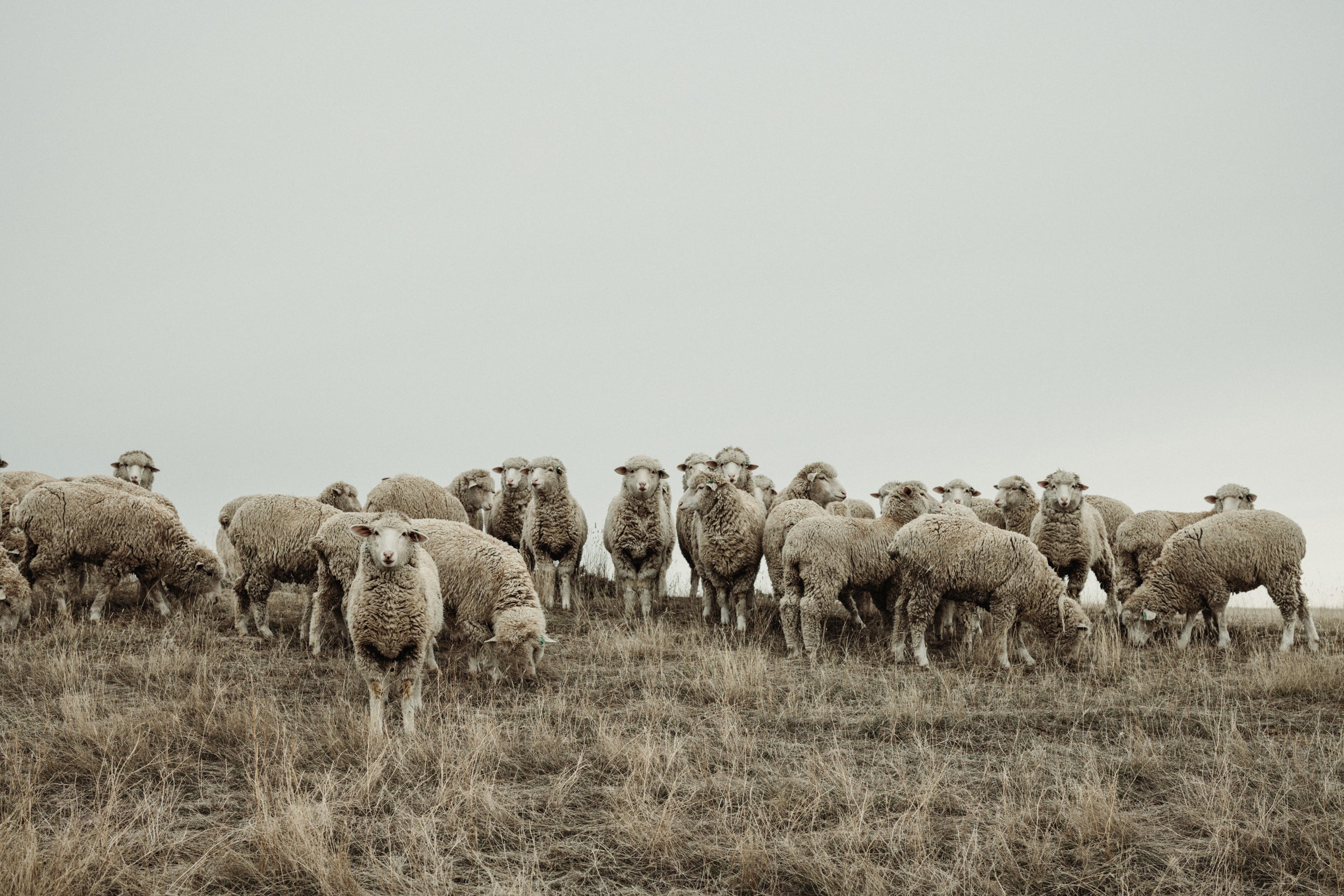Production Losses
This page shows the "production losses" -- leakage -- starting with greasy (raw) wool through finished Fabric. Batch 9 (in progress as of this writing) will serve as an example.
Batch 9 Greasy:
- 44,582 pounds (20,219 kg) greasy wool yields 23,183 pounds of clean wool "top". Yield of 52%
- Spin top into yarn (worsted spin for warp or woolen spin for weft), yield is about 92% ... 21,328 pounds remain ... However, the loss can be as high as 12% for worsted (warp) spinning
- Depending on the situation, we will dye before or after spinning. Either way, yield is about 95% ... 20,475 pounds remain
- Dress and weave the yarn, 90% yield, 18,428 pounds remain. Losses can be quite a bit higher than 10% if the yarn is not up to the rigors of weaving. We try to avoid this!! ... but it doesn't always pan out that way
- Finish the griege fabric, 90% yield, 16,585 pounds (7522 kg) of finished Fabric
- From greasy to finished Fabric, the yield is about 37% ... that is, 63% of the starting weight is lost
But not all the "loss is really loss". The weight lost in processing greasy into top is material that we don't want. But after that, we are losing good fiber.
Also, some of the weight lost in weaving is more accurately thought of as "unused". When a cone of yarn gets down toward the end, it may not really be worth using the last fraction of the yarn during the large-scale production of fabric. MTL will save these small remnant-cones for us.
Debby will take the "remnant cones" to Fleck Knitwear. Peter Fleck showed Debby how to recone the remnants. All the knitting and weaving shops have a machine specifically for re-coning. The machine at Fleck will recone six spools at a time ... that is, it will simultaneously recone six remnants onto six full cones. Given that the machine handles the yarn very quickly, Debby will be working at the machine constantly, tying the end of one remnants spool to the beginning of the next. We picked up (guessing) a few hundred remnant cones at MTL, so Debby will be "busier than a 1-arm paper hanger" for a few hours. But once she is done, Fleck will have full cones from which to knit cords and cuffs.
Also, it's a really big thing for us that we can find local knitters, because, last time we looked, soft, comfortable, 100% American wool cuffs (ribs) were not commercially available!
There are other losses that are better described as imbalances:
- Bales: Bales of wool ("top" in this case) weigh about 600 pounds (273 kg). And so there are situations where you might wish for 450 pounds, but you're going to have to work with 600
- Extra Yarn, whether warp or weft. Aside from the end-of-cone situation described above, every production run results in some extra, unused yarn, whether warp of weft. We know how much warp and how much weft go into each or our Fabrics. But it's necessary to send some extra yarn to be sure yo don't run short of goal. Usually, the extra yarn means we produce extra Fabric. But even if the run does not yield extra Fabric, we will almost surely not exhaust all the warp and all the weft at the same time. There will be some leftover cones of either warp or weft. And we will use the leftovers, although that means we need to do a little mixing of Batches (the "real world" smacks down my "batch plans", but just a little!).
26 August 2023 --- Ralph

